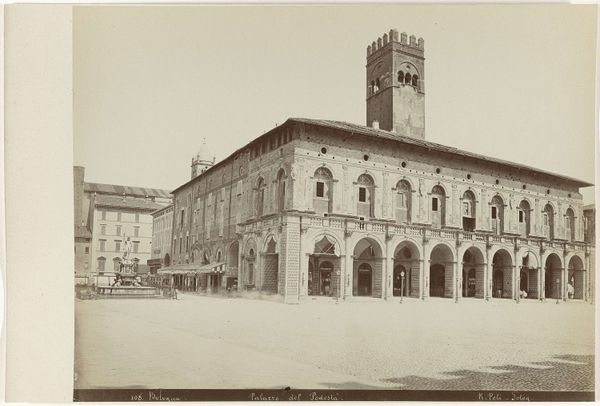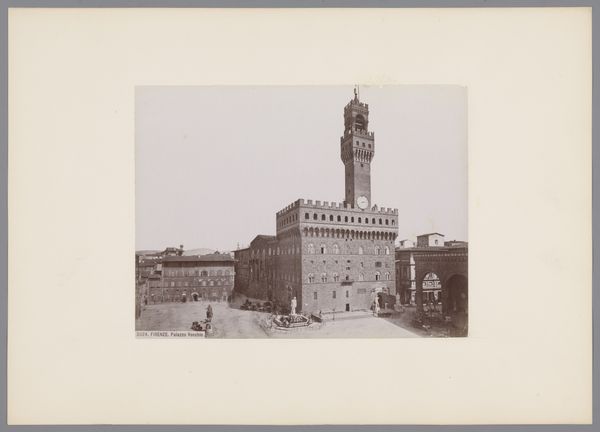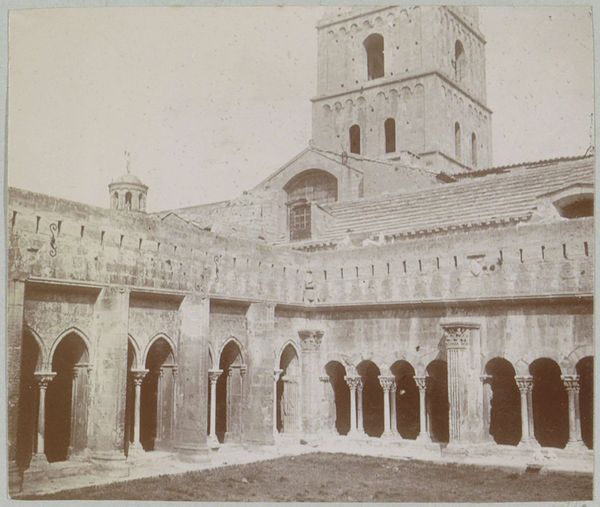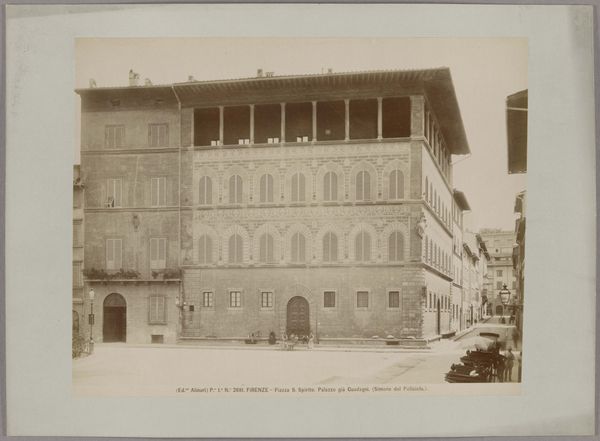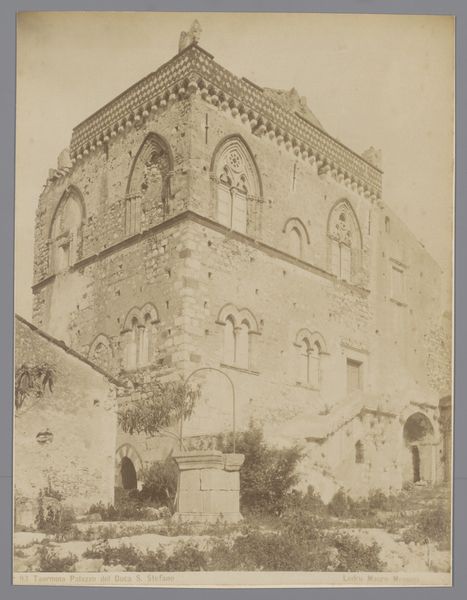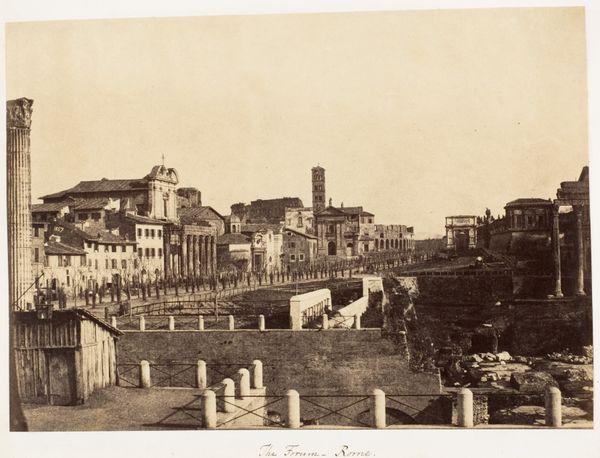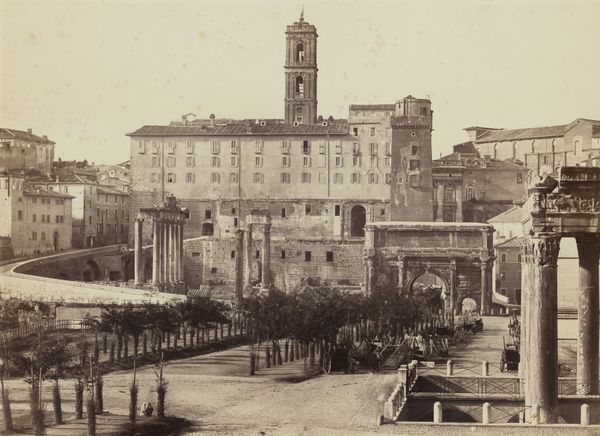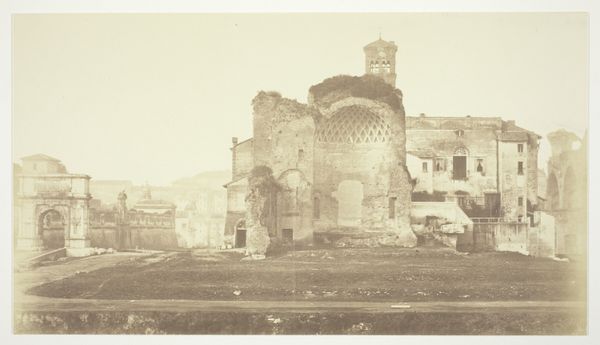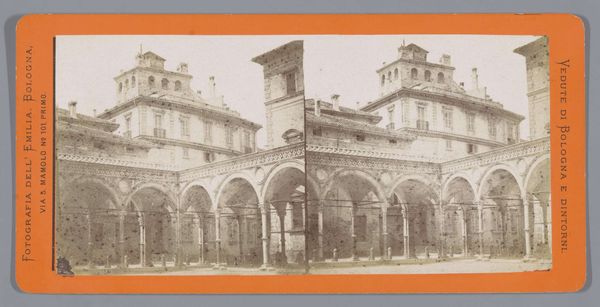
Gezicht op de Basiliek van Sint-Ambrosius te Milaan c. 1875 - 1900
0:00
0:00
print, photography, gelatin-silver-print, architecture
# print
#
photography
#
gelatin-silver-print
#
cityscape
#
academic-art
#
architecture
#
building
Dimensions: height 196 mm, width 250 mm
Copyright: Rijks Museum: Open Domain
Curator: This photograph, taken by Fratelli Alinari between 1875 and 1900, presents a “View of the Basilica of Sant’Ambrogio in Milan.” It's a gelatin silver print. Editor: It's a surprisingly calm image, considering it's a city scene. There's a quiet grandeur to it, a weightiness in the architecture rendered through the photographic process itself. You really get a sense of the materiality, even in this two-dimensional representation. Curator: Precisely. The basilica itself is fascinating. Its history speaks to a complex intertwining of power, religion, and civic identity in Milan. Constructed in the 4th century, rebuilt in the 11th, it is rich in cultural significance that marks a pivotal juncture in European history. Editor: Look at how the photograph itself functions almost like a historical document. The gelatin silver printing process—consider the labour, the techniques involved in creating such a reproducible image. What's interesting is the intersection between craftsmanship and mass dissemination. The materiality makes accessible and repeatable, at the expense of individuality. Curator: That’s a valid point. However, thinking through the lens of identity, the image becomes part of the grand tour narrative for elite travelers. Images like these were collected as proof of one’s experience in the city and signal an affiliation with certain historical values. To ask a question of gender, who holds that power? Who does it exclude? Editor: But isn’t it also about access? Suddenly a broader audience can participate with art because of advancements of the materials themselves? Look how the light interacts with the structures. I am mostly engaged by the interplay between representation, the physical substances that give the work substance, and the labor invested to create art and to disseminate it. Curator: This exchange has me wondering, what stories are missing? Which individuals and populations, particularly within the frame and labor involved in the Basilica itself, are elided? This conversation itself signals that there can be numerous lenses when evaluating a single artistic moment. Editor: And those materials persist even after other social aspects evolve. We should perhaps, focus less on who did what to the structure, but instead allow the artwork to take precedence. I remain committed to acknowledging and considering art’s making before assigning power or influence based on factors we don’t completely know.
Comments
No comments
Be the first to comment and join the conversation on the ultimate creative platform.

